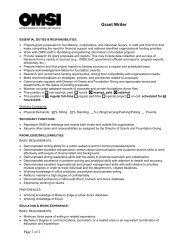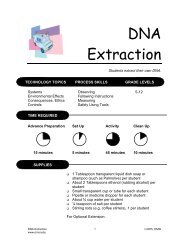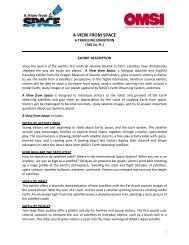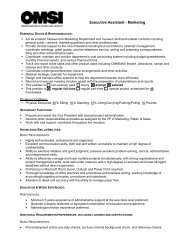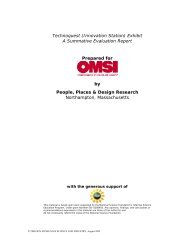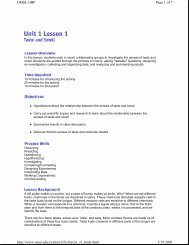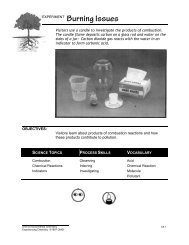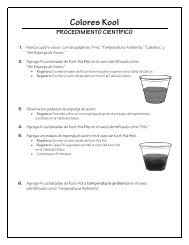ADRENALINE RUSH: THE SCIENCE OF RISK - Big Movie Zone
ADRENALINE RUSH: THE SCIENCE OF RISK - Big Movie Zone
ADRENALINE RUSH: THE SCIENCE OF RISK - Big Movie Zone
You also want an ePaper? Increase the reach of your titles
YUMPU automatically turns print PDFs into web optimized ePapers that Google loves.
PART 2 / FOR A BIGGER <strong>RUSH</strong> / DIFFERENT TYPES <strong>OF</strong> <strong>RISK</strong><br />
Different Types of<br />
<strong>RISK</strong><br />
As an unavoidable part of life, risk comes in many shapes and<br />
forms. There are, of course, the physical risks that we experience<br />
in our everyday activities or the medical risks that come<br />
from exposure to virus and bacteria or other health-threatening<br />
products. There are also financial risks that come along with<br />
almost any of life’s major endeavors, and environmental risks<br />
caused by weather phenomena and natural catastrophes like forest<br />
fires or earthquakes. There are risks to our personal property,<br />
and even emotional risks in our personal relationships. And for<br />
some people, there are judicial risks linked to breaking the rules<br />
and laws that govern society.<br />
No wonder we collectively spend so much time trying to keep<br />
ourselves safe – or in other words, evaluating and managing risk.<br />
These tasks are complex and are often influenced by subjective<br />
perceptions, rather than hard facts.<br />
Part 2: FOR A BIGGER <strong>RUSH</strong><br />
after all, many more people are exposed to bee stings than<br />
shark attacks. Plane crashes are omnipresent in our imagination,<br />
yet the chances of dying in a car wreck are much higher: 1 in<br />
6,000 for cars, less than 1 in 1 million for planes.<br />
Evaluating risks of any kind also requires weighing individual as<br />
well as collective or environmental circumstances. Risks of dying<br />
from cancer or from heart disease are relatively high, on average,<br />
but they vary greatly according to your age, where you live,<br />
and other health factors like smoking, exercise, etc.<br />
In other words, in evaluating and managing the risks in our lives,<br />
and before making lifestyle choices that may influence a number<br />
of risk factors (negatively or positively), we may need to take a<br />
deeper look at serious numbers and facts to make the right decision.<br />
For instance, although we are constantly impressed by the<br />
destructive power of earthquakes and hurricanes, the most<br />
deadly form of weather phenomena is actually the heat wave.<br />
On average, according to scientists at the University of<br />
Delaware, heat waves cause an average of 1,500 deaths in<br />
American cities per year, while tornadoes, earthquakes and<br />
floods together total less than 200 deaths a year.<br />
The impressive and the dramatic often seem more dangerous to<br />
us than the commonplace, yet actual risk often goes the other<br />
way around. Shark attacks may seem a high risk to us, but they<br />
actually cause around ten deaths per year worldwide. By comparison,<br />
allergic reactions to bee- and wasp-stings cause somewhere<br />
between 50 to 100 deaths per year in the US alone –<br />
Links:<br />
http://www.nfpa.org/Education/index.asp<br />
The National Fire Prevention Association’s website has a large<br />
section on safety, going well beyond fire prevention and including<br />
games and useful safety tips.<br />
http://www.cdc.gov/safeusa/school/safescho.htm<br />
The United States’ Center for Disease Control and Prevention’s<br />
SafeUSA program includes a Safe at School Section that provides<br />
a wide array of resources to reduce violence and injury in<br />
and around schools:<br />
18







